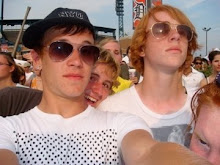
A History of Violence represents, to me, the perfect use of a comic as adaptable source material. John Wagner and Vince Locke crafted a fantastic crime story in their original version of the story, and David Cronenberg (and his screenwriter) took a sizable seed from that story to tell their own tale for a different time and a different medium, while keeping pure the central spirit of the story.
The original comic flew under the radar for years; many, accustomed to more “mainstream” comic art, are likely turned off by Locke’s scratchy, loose pencils. I’ll admit there were a handful of pages that seemed unclear to me on first read-through, but I can accept that for the intimacy delivered in his frantic pages. It feels as if Locke crafted these pages with a Bic pen from the market down the street, and it makes the material that much closer to home.

Cronenberg’s and Wagner’s visions diverge considerably after the inciting incident, but I feel like the changes made for the film either improve wholly on the story or make elements workable in film that wouldn’t otherwise make the transition from the comic. My biggest example of the former is that Tom’s family does not take so easily to his reveal of a disturbing past life. This beat felt unnatural in the comic, a note of unrealism in an otherwise relatively realistic story.
Cronenberg and co. also dodge some severely difficult plot points to pull off in film, especially the lengthy flashback to Tom’s youth. Had that remained in the film, it would have directed attention away from the brilliant work of Viggo Mortensen, rested on the acting skills of a considerably younger actor, and pushed suspension of disbelief with the story of teens planning and executing an attack on the mob. The disturbing ending of the comic would have also served to push belief (although it remains shocking that Cronenberg, of all directors, managed to pass up a chance at such extreme body horror).

While I feel that the violence used in Wagner and Locke’s comic is effective and shocking, Cronenberg absolutely managed to top them. The film version features some of the most stunningly shocking violence I’ve ever witnessed on film. The crunch of the mobster’s nose sticks with you long after the credits have rolled. The violent sex scenes also introduce a compelling counterpoint – and parallel – to the violence on display, and is without comparison in the sexless comic.
While it’s tempting to declare Cronenberg’s film an outright improvement on the comic, I feel they serve distinct purposes and work for their respective media in ways that don’t easily translate. While tonally it’s a polar opposite, I would compare elements of this to Scott Pilgrim in its handling of the source material and its selective changes in bringing the material to film.





















